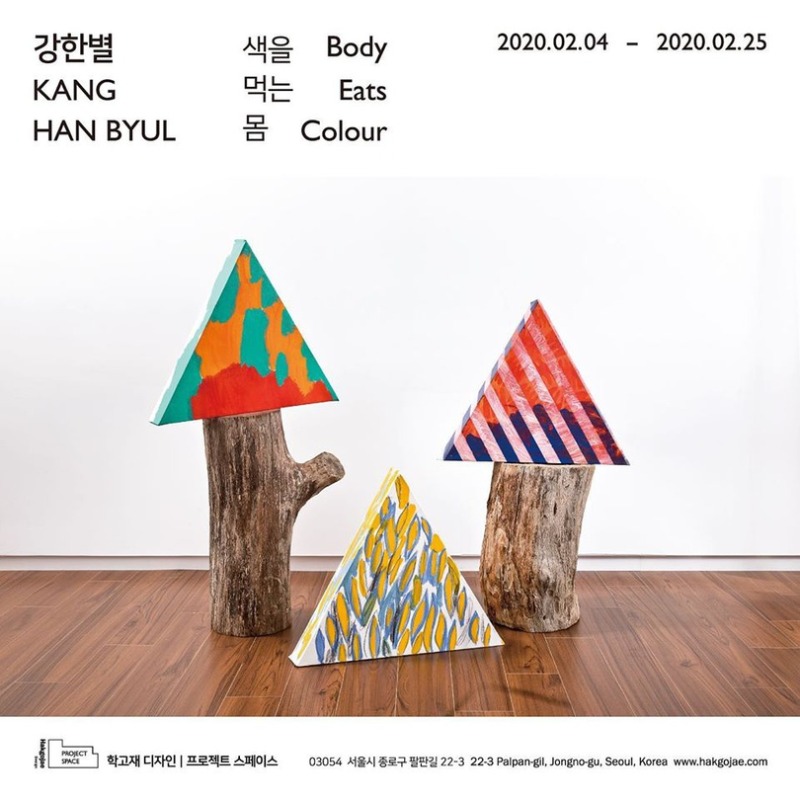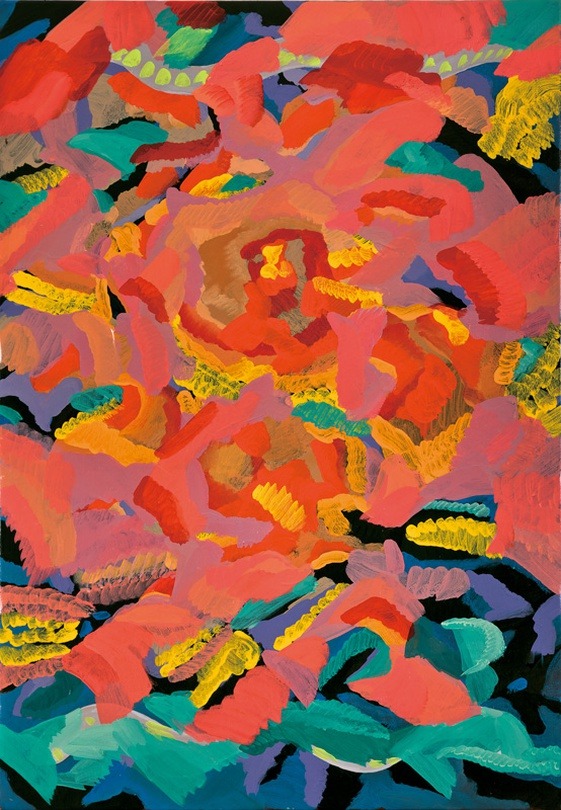
| Period| | 2020.02.04 - 2020.02.25 |
|---|---|
| Operating hours| | 10:00-18:00 |
| Space| | Hakgojae Design | PROJECT SPACE /Seoul |
| Address| | 22-3, Palpan-gil, Jongno-gu, Seoul, Republic of Korea |
| Closed| | Mon |
| Price| | Free |
| Phone| | 02-720-1524 |
| Web site| | 홈페이지 바로가기 |
| Artist| |
|
정보수정요청



|
|
Exhibition Information




Body Eats Colour Miran Park ︱ Curator at Hakgojae Gallery The Himba is a tribe living in a region of northern Namibia, Africa. Due to the unique classification of colours in their language, the Himba perceive a different coloured world. ‘Vapa’ signifies white and some shades of yellow, the colours of sunrise. ‘Zuzu’ stands for a wide range of dark shades, the colours of the falling dusk. The Himba do not quite differentiate some shades of blue and green and call these shades ‘Buru’ as a whole. ‘Dambu’ signifies a group of slightly different shades of green. For this reason, the Himba can distinguish various shades of green, so slight that we cannot even perceive.1 The innate perceptual ability develops or degrades according to the environment – one’s range of cognition changes according to the person’s way of thinking. Unnamable colours soar beyond sight. Countless scenes are lost due to our rigid perspective. Kang Han Byul concentrates on her senses. She forgets the subject’s name and sees it through an unfamiliar perspective. The act of painting is like learning a new language. It is like conveying one’s thoughts with unfamiliar pronunciation. Kang Han Byul translates the world through colour. Her grammar is simple. She swallows with her eyes and expectorates through her hands. The picture screen eats colour to develop. Painting, Body Eats Colour 2 (2020) depicts Calendulas blooming outside of her studio window. Calendula is nicknamed ‘snake flower,’ due to its distinctive scent that repels snakes. In the same way the Calendula repels snakes, a symbol of wisdom, Kang strived to forget all her previous knowledge while painting this work. Keeping a child-like heart, Kang views landscapes without notions. Her paintbrush erases shapes and stirs up colours. The snake’s form is vague; intuitive brushstrokes smother reason. In the nightscape of Body Eats Colour 4 (2020), the Calendulas retract their petals, and the snake vanishes. These are the hours of wakening sentiments. The stamens twinkle like stars in the dark. Kang Han Byul is a listener rather than a narrator. She closes her eyes and sees the light that penetrates her eyelids. The landscape seeps into the skin. The picture screen does not assert nor convince, but merely suffuse in the colours in place. Parts where the eyes remain for longer become closer to abstraction. NICEBODY (2014/20) is an installation that consists of three canvases and two logs. The nature-made logs seem geometric. The artist was inspired by her experiences during her stay in Nice, France. Kang used an ambiguous title for this work, recalling the body indwelled in a foreign country. Colours penetrate on all borders of the shapes. Pencil lines embrace the colours that grew like wild grass. At times, acceptance is harder than pushing away. One must unclench the muscle of thought to gain flexibility. One can flexibly embrace only when soft joints are attained. There are no sentences nor sets of vocabulary agreed upon in the language of painting. Unconfined metaphors and equations fill up the picture screen. The act of painting is like translating sensations, a process of exploring beyond the borders of notion. The painter must feel more and embody it extensively for an innovative painting. The brush’s pulse conveys the state of mind. When painting without motive continues, the act of painting itself becomes the purpose. Kang Han Byul’s picture screen eats nature. 1 Horizon: Do You See What I See? (2011), BBC two, Available at: https://www.bbc.co.uk/programmes/b013c8tb
